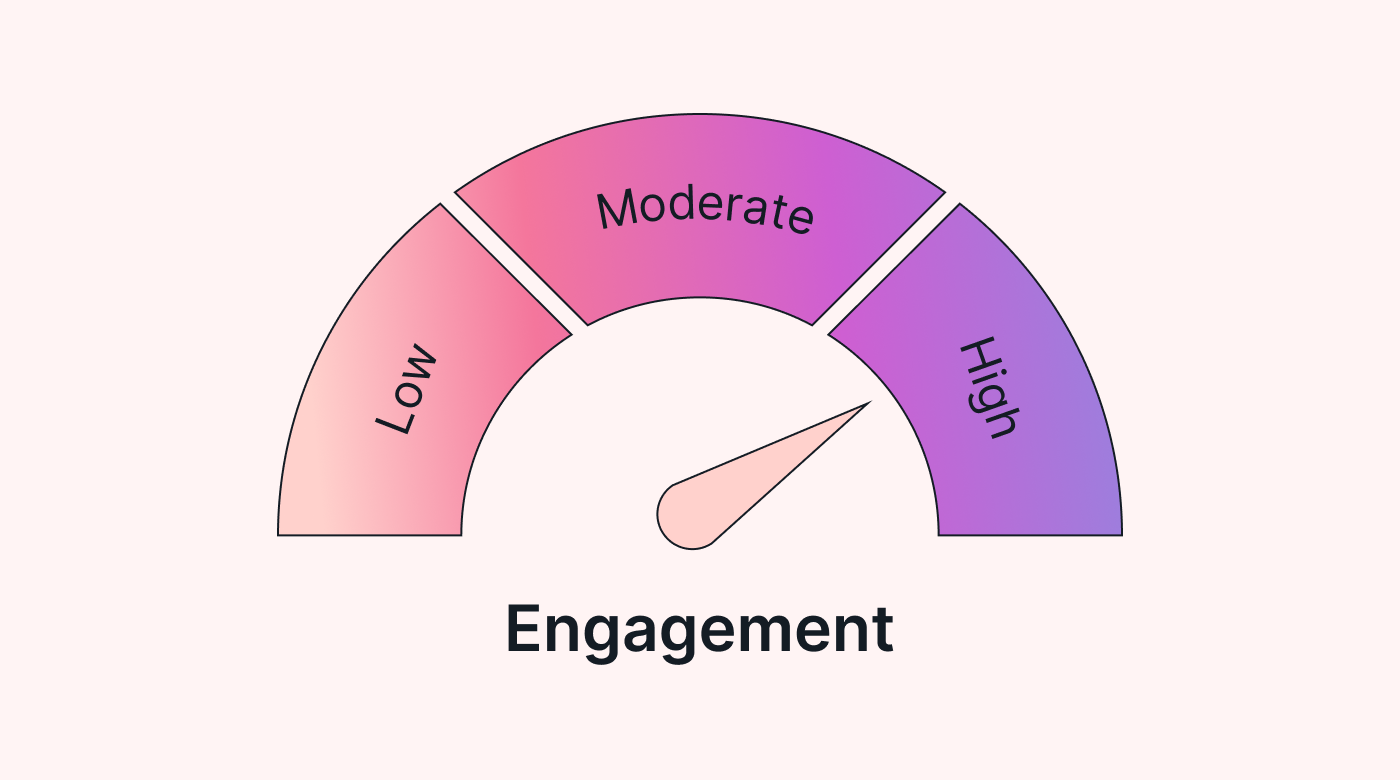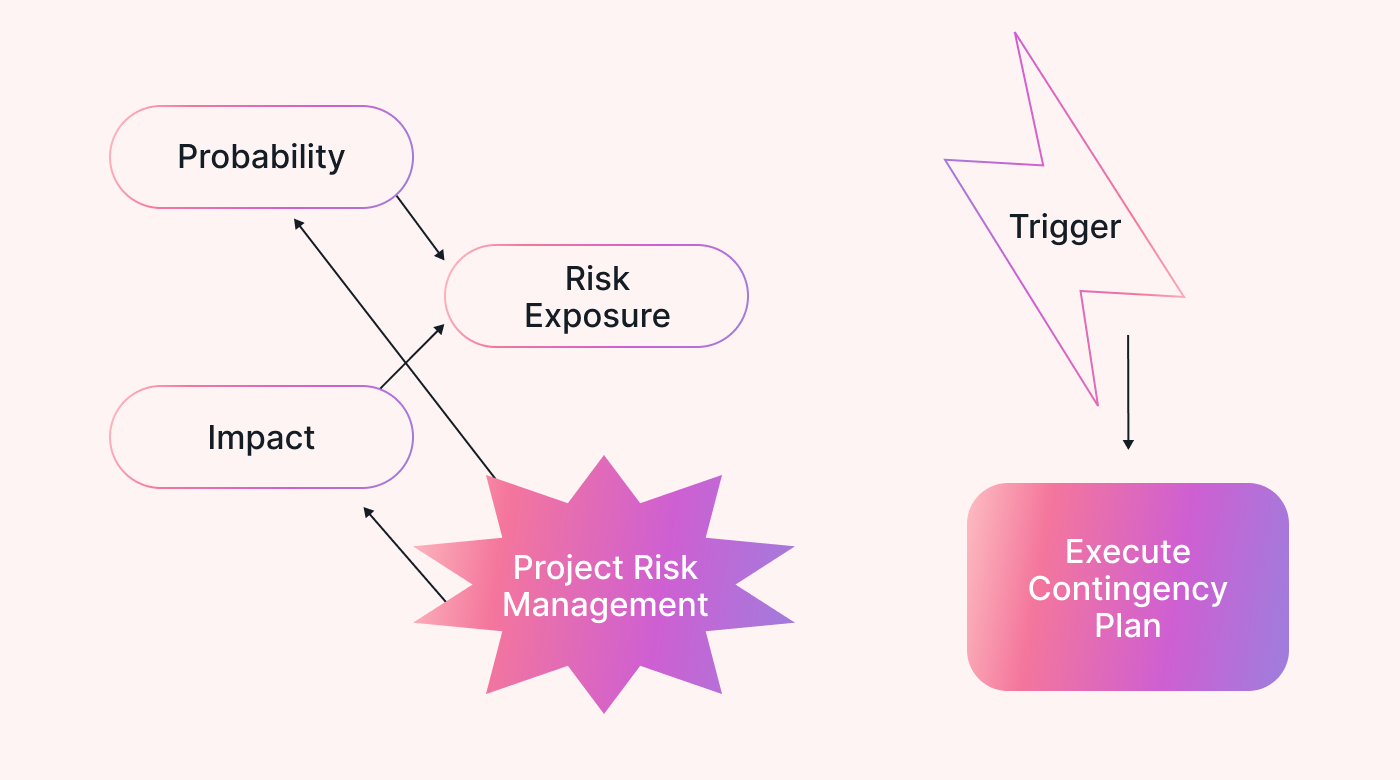When you complete a project on time and within budget, you call it a success!
Now, toss in a wild scenario: You have no timelines or budget limit. As amazing as that sounds for a project manager, how would you know if your project succeeded?
This is where project success criteria come into the picture.
In this article, we’ll review some examples of success criteria to understand how important they are for you to know how good or bad your project was. Plus, we’ll discuss why measuring success with these criteria is crucial and how to create your own.
What are project success criteria?
Project success criteria are principles or standards. These standards define what you must accomplish in measurable terms to ensure client, stakeholder, and customer satisfaction. For example:
- Project completion on time
- Project completion within budget
- The project sticks to the original scope, and the results are functional
- The project meets consumer demand
- The project outcomes satisfy the clients
 |
Now, not all projects are the same. So, success criteria are derived from your specific business objectives, making them variable and dependent. They determine how you check a project’s success.
11 project success criteria examples
Some success criteria are intangible values, like the expectations of stakeholders and donors. They can be difficult to determine. These things take their sweet time to reveal themselves fully. But there are some that you can nail down beforehand.
Here’s a combined list of both that are also the most common project success criteria examples:
1. Scope
No project scope = no goals, objects, or deliverables. Basically, without a scope, no work exists to measure and define success. That’s why you first need a scope in place.
The project manager works with other stakeholders to determine the project requirements and establish the scope.
Stakeholders check to see if the project outcomes meet the scope after project completion. If so, it’s a thumbs-up for the project manager. They have successfully guided the team to deliver results that meet expectations.
CRITERIA EXAMPLE:
If the scope involves digging into research, crafting a content strategy, creating the actual content, and publishing it on your client's company blog, you must tick all those boxes to call it a success.
2. Cost
The project manager must see if the total project cost fits within the expected budget. This is the budget stakeholders establish at the beginning.
If the project is completed without breaking the bank, it’s considered successful. However, it can happen that some parts of the project cost more than expected (surprises and changes do happen). In such a case, project managers can document those increases. It’ll allow them to show stakeholders how they managed the budget.
CRITERIA EXAMPLE:
A project is expected to cost $18,000; after completion, the cost is $17,800. The project was a success since it didn’t surpass the budget and wasn’t extremely under either!
3. Timeline
One of the most important success criteria is the time limit within which a project should be done. Project managers and other stakeholders put their heads together to decide on a project timeline during an initial meeting at the project’s start.
How do you define a timeline success? A project team produces the deliverables within that decided timeline.
But that’s not it. The timeline can contribute to other success factors, including the overall project budget and resource availability. This makes it a crucial criterion for measuring your project’s success.
CRITERIA EXAMPLE:
A project starts on January 3 (decided start date) and ends on or before April 9 (decided due date).
4. Deliverables
This criterion measures the quality of the finished product or outcome. Project managers can determine the quality of deliverables and meet this success criterion by reviewing quality during each project phase. Their best friend? A quick quality checklist!
If the project manager and team can deliver the agreed-upon quality of deliverables, it’s considered a success!
CRITERIA EXAMPLE:
A mobile phone’s launch success depends on its functionality and usability.
 |
5. Resource capacity
Not having the right people or resources is never fun when you’re in the middle of a project. So, it’s crucial to plan resources effectively. It ensures that the necessary members and supplies are ready to help meet the objectives.
The resource capacity success criterion measures how well a project manager allocates resources to keep the team working toward the project objectives. The lesser the scarcity of resources, the higher the project’s success.
CRITERIA EXAMPLE:
The project manager assesses the skills and expertise needed in a product development project. They’ll assemble a team of developers, user interface designers, quality assurance specialists, and product managers. Then, ensure they have enough bandwidth. The project manager will also ensure the right tools and equipment are available beforehand. No one will have to wait around wasting time.
Read more: What is capacity planning?
6. Risk management
Risk management involves identifying potential risks before they create havoc. This proactive approach allows the project team to expect and prepare for challenges — increasing the likelihood of project success.
Meeting the criterion for risk management typically means you and your team have very few unanticipated risks, and you were able to mitigate them — reducing possible project delays.
CRITERIA EXAMPLE:
In a software development project, the team identifies the risk of unforeseen compatibility issues with the chosen e-commerce platform and payment gateway. Meeting the risk management success criterion will include tackling this by conducting thorough compatibility tests and opting for APIs that are known to integrate seamlessly.
7. Team satisfaction
Your project team’s efforts will take you to the finish line. That’s why the project manager needs to track the team’s morale and effectiveness as well as care about their overall project experience. A high team morale will only result in better productivity, increasing the chances of a successful project.
Moreover, project teams work towards the end goal (project success) and are familiar with every detail. That’s why their feedback is essential.
CRITERIA EXAMPLE:
High team satisfaction can be a combination of many things, such as:
- Clarity regarding their tasks
- Open communication
- Recognition and appreciation
- Cross-cultural understanding
- Proactive leaders or managers
8. Business goals
This is the most important success criterion of all!
Why? Because it evaluates the accomplishments of the project against the expected outcomes. It measures to see if what’s been completed is expected to, or will, meet the business goals.
Meeting the criterion for business goals means a team has delivered outcomes that can achieve the project's expected benefits.
CRITERIA EXAMPLE:
If stakeholders decide on a short-term time-based business goal of improving customer service within 90 days, success will mean achieving the same within the time limit.
9. Stakeholder satisfaction
This success criterion evaluates your stakeholders' engagement and satisfaction with project management processes and project outcomes.
The best way to achieve success here is for managers to update stakeholders regularly regarding the project’s progress. This often includes the project cost and timeline. As a result, you improve their trust in you, ensuring stakeholder satisfaction.
CRITERIA EXAMPLE:
You take a stakeholder satisfaction survey after the project is complete to get an idea about where or how you can improve. They rate your communication and overall project management a high rating.
 |
10. External customer satisfaction
Imagine your customer is unhappy with your product or service. Nightmare alert!
Since projects begin with the dream of delivering the right product or service to them, their satisfaction is one of the largest indicators of success or failure.
CRITERIA EXAMPLE:
A customer leaves positive feedback on Google about your product, or recommends you to others.
11. Regulatory Compliance
Regulatory compliance refers to specific objectives your project must meet to adhere to standards, laws, regulations, and other rules set by governments and other regulatory bodies. Think of it as the referee ensuring fair play in the game of projects!
You’ve probably encountered these standards in sectors and disciplines like finance, healthcare, and environmental protection.
Is your project subject to regulations?
Then, success is when your project complies with project-specific regulations and standards. Project managers can ensure your project meets regulatory standards through audits, assessments, testing, and documentation confirming regulatory adherence.
CRITERIA EXAMPLE:
A hospital must adhere to the Health Insurance Portability and Accountability Act (HIPAA) to protect patient health records and confidentiality.
Why is it important to measure your project triumph using success criteria?
It’s important! How else would you know you did well?
The following are the advantages of measuring project success:
- Reduces project risks: Project success criteria help project managers spot risks, giving them the power to dodge potential pitfalls.
- Sets standards: Understanding project success expectations can help project managers establish benchmarks that they can use to track a team's progress.
- Improves transparency: It fosters transparency among stakeholders, ensuring everyone's on the same page about what project success looks like.
- Reveals areas of improvement: Taking time to define project success can help improve processes for future projects. This is by identifying what went well during a project and areas for improvement.
- Increases engagement: Defining and measuring project success criteria improves engagement between the project team and other stakeholders, aligning them in a coordinated dance toward success.
 |
How do you create effective success criteria for your project?
Here’s a simple guide to determining success criteria for your unique project:
Step 1: Planning!
The project manager should start by clearly outlining factors like:
- The success criteria name
- Success criteria measurement techniques and when to measure it
- Who’ll measure the criteria
Step 2: Create the scope.
The project manager, with the help of stakeholders, should create the scope. It’ll help define the goals, required resources, timeline, client expectations, budget, and other necessary details. The scope will depend on the project type.
Step 3: Set up meetings with stakeholders.
Bring everyone to the table. This includes all relevant stakeholders like the internal team, managers, clients, and investors. The purpose? To set up lively meetings, brainstorming sessions, or any means that gets the ideas flowing to tap into the collective wisdom defining what success looks like. After discussion, finalize the vital project success criteria.
3 FAQs related to project success criteria
Here are some FAQs for further clarity on the subject of project success criteria:
1. Project success criteria vs. project success factors: What is the difference?
Project success criteria are measurable project outcomes. For example, achieving at least 90% user satisfaction with the user acceptance test to satisfy clients. Or completing a project within the decided budget.
On the other hand, project success factors are the activities or elements needed to achieve the project’s success criteria. For example, a strong supply chain that can support all facets of the procurement strategy. Or an intelligent client who’s all about teamwork and not tug-of-war.
To sum it up: Success criteria measure success, while success factors facilitate the achievement of success.
2. Project success criteria vs. project objectives: What is the difference?
Project success criteria are standards that provide a directional framework for project objectives. On the flip side, project objectives are the measurable key steps and milestones needed to complete the project deliverables.
3. What is project success?
Project success is the overall project outcome that keeps your clients, customers, or other stakeholders happy. You achieve this success when projects meet the expectations and requirements established at the start of the project.
For example, stakeholders may consider a project successful if it's completed on schedule without blowing the budget.
Meet your success criteria with Motion
Let’s be real: Whether defining the scope, setting a timeline, or maintaining compliance, you need success criteria. Or you’ll be lost. You can never tell if you did well or if there’s room for improvement. No improvement implies no growth, and your competitors will move ahead in the race.
So, why not use the criteria examples discussed above to measure your success?
Lucky for you, tools like Motion exist that’ll make tracking your success easier than ever. It allows you to ensure project tasks progress according to the set timelines and that resources are used optimally.






